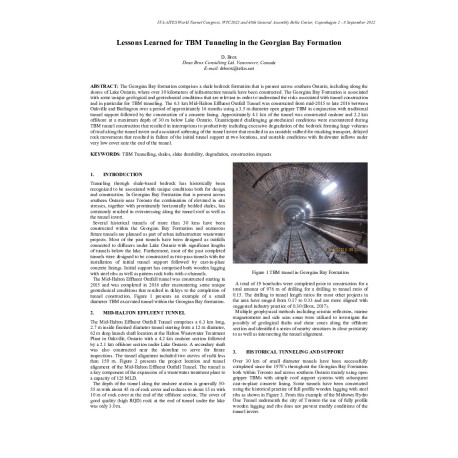Cart
0
0
No document
0,00 €
Total
Document successfully added to your shopping cart
Quantity
Total
There are 0 items in your cart.
There is 1 item in your cart.
Total documents
Total shipping
To be determined
Total
Search & filter
Search for a publication
Search & filter
Viewed documents
Lessons Learned for TBM Tunneling in the Georgian Bay Formation
Lessons_Learned_for_TBM_Tunnelin
The Georgian Bay formation comprises a shale bedrock formation that is present across southern Ontario, including along the shores of Lake Ontario, where over 30 kilometers of infrastructure tunnels have been constructed. The Georgian Bay Formation is associated with some unique geological and geotechnical conditions that are relevant in order to understand the risks associated with tunnel construction and in particular for TBM tunneling. The 6.3 km Mid-Halton Effluent Outfall Tunnel was constructed from mid-2015 to late 2016 between Oakville and Burlington over a period of approximately 16 months using a 3.5 m diameter open gripper TBM in conjunction with traditional tunnel support followed by the construction of a concrete lining. Approximately 4.1 km of the tunnel was constructed onshore and 2.2 km offshore at a maximum depth of 30 m below Lake Ontario. Unanticipated challenging geotechnical conditions were encountered during TBM tunnel construction that resulted in interruptions to productivity including excessive degradation of the bedrock forming large volumes of mud along the tunnel invert and associated softening of the tunnel invert that resulted in an unstable railbed for mucking transport, delayed rock movements that resulted in failure of the initial tunnel support at two locations, and unstable conditions with freshwater inflows under very low cover near the end of the tunnel.




